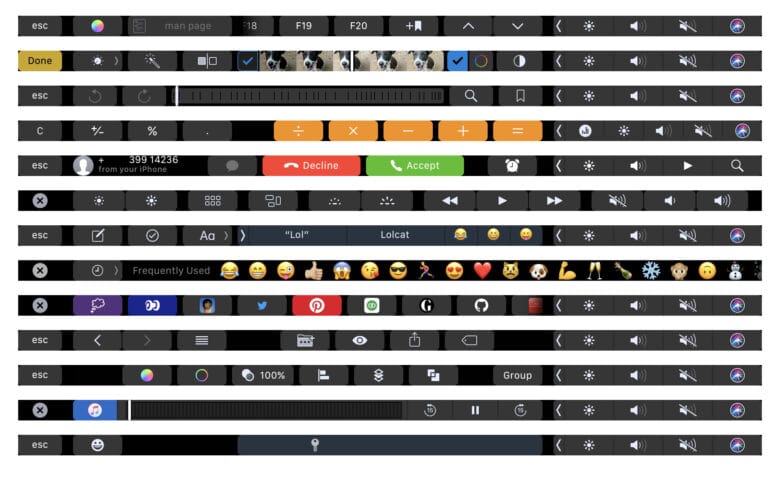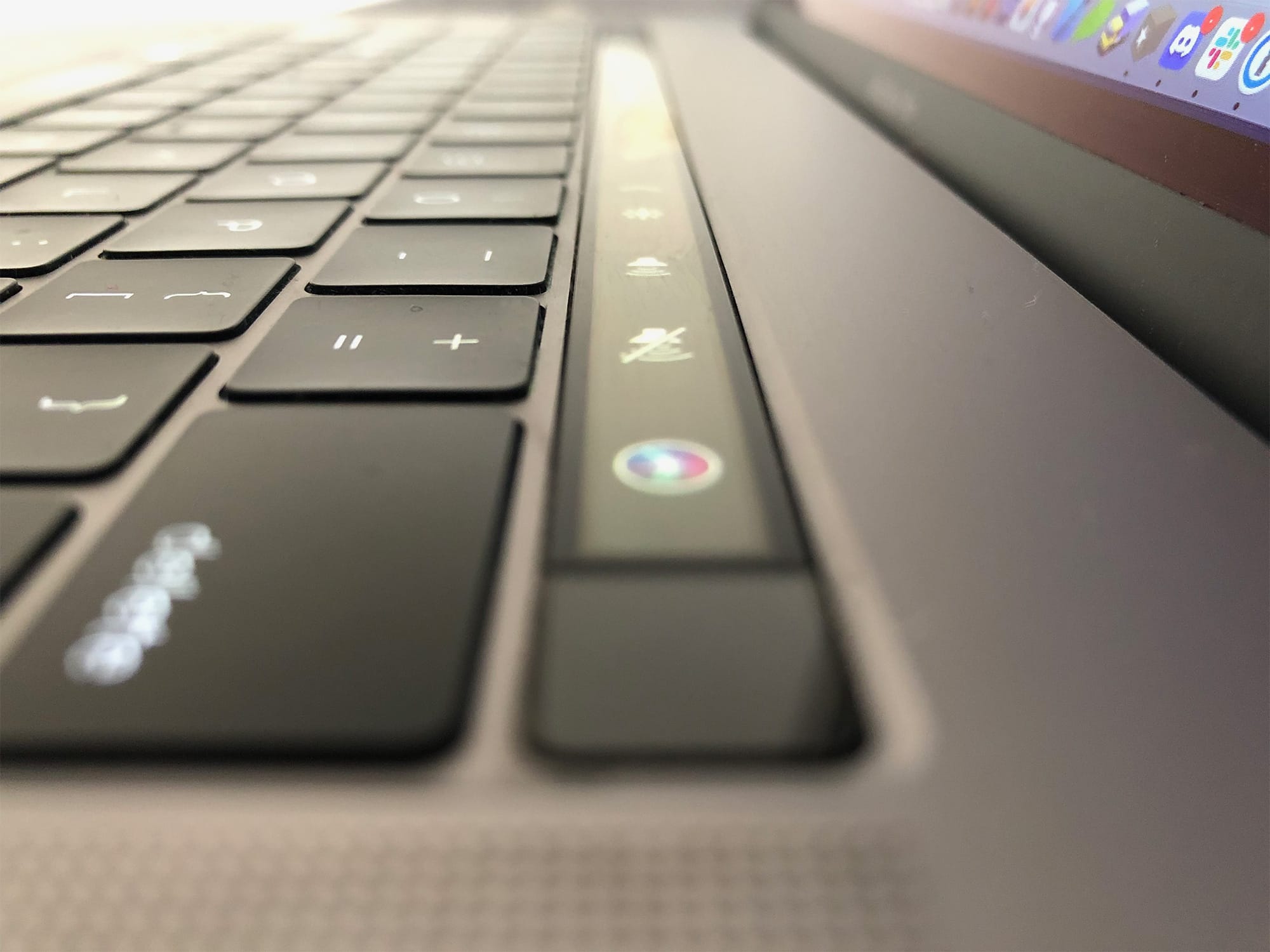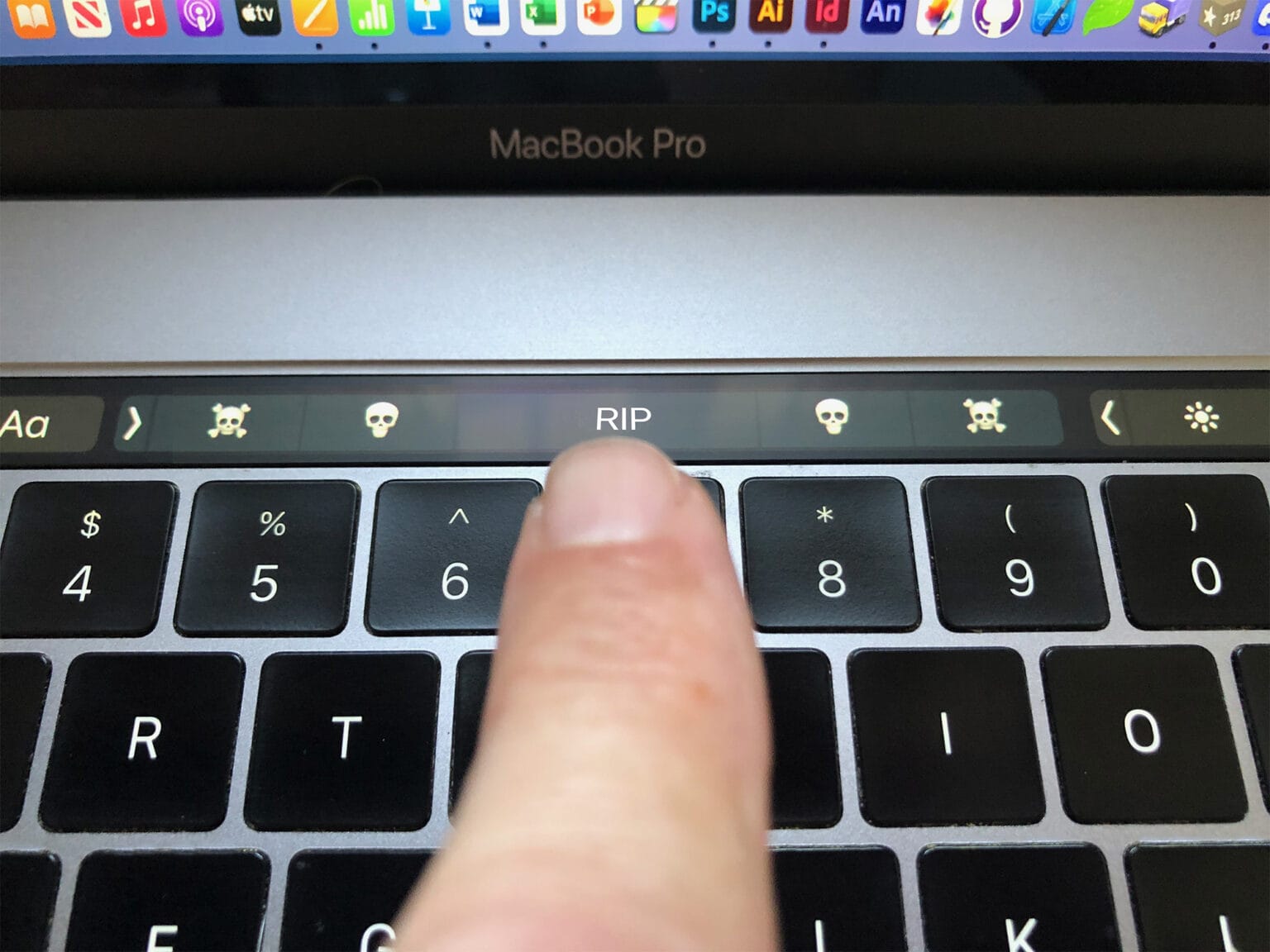The MacBook Pro’s Touch Bar was a technological marvel in its day. It brought the magic of multi-touch to macOS and, with its stand-alone T1 chipset, it put ARM-based Apple Silicon inside the MacBook when the M1 chip was still just a twinkle in Cupertino’s eye.
There’s no doubt it was a clever piece of engineering, but it proved unpopular with pro users. Many missed the tactile feedback of the traditional Escape key and function keys.
Apple rejigged things last year, shrinking the Touch Bar to make room for a physical escape key, but it was too little too late. Many will be glad to see the Touch Bar go, but I’m gonna miss that little sliver of multi-touch magic at the top of my keyboard.
Apple’s track record of scrapping popular hardware features
Steve Jobs hated focus groups. He didn’t believe in asking consumers what they wanted because he believed it was too hard for them to envisage a product they’d never seen. He liked to quote Henry Ford, who supposedly once said, “If I had asked people what they wanted, they would have said faster horses.”
Apple aims to give consumers what they need, rather than what they want. That strategy often involves making big gambles, replacing popular features with new, untested ones.
For example, Jobs insisted there should be no floppy drive in the original iMac when it was a standard component of every computer at the time. Similarly, the iPhone was the first major smartphone to dispense with a tiny plastic keyboard. More recently, Apple scrapped the headphone jack on the iPhone 7.
In all three cases, people screamed blue murder and insisted that Apple was doomed. But these bold decisions proved prescient, and the rest of the industry soon followed Cupertino’s lead.
But things don’t always turn out that way. With the launch of the M1 Pro/Max MacBook Pros this week, Apple rolled back several controversial decisions, reinstating MagSafe, the HDMI port, the SD card slot and function keys.
That was great news for many pro users, but for Touch Bar fans like me, it marked the end of an era.
Cupertino finally showed the Mac some love again
When Apple first introduced the Touch Bar in 2016, I was stunned. It was just so unexpected. Apple had been so fixated on its burgeoning iPhone business, the Mac was all but forgotten. Some models, like the Mac Pro and Mac mini, hadn’t seen updates in years. Their processor speeds were so far behind the competition, it was embarrassing. Even popular models like the MacBook Pro and iMac only got the occasional speed bump.
With the introduction of a revolutionary new feature like the Touch Bar on the 25th anniversary of Apple’s first notebook, Cupertino made a powerful statement: The Mac was back.
When multi-touch finally came to the Mac, it wasn’t what most users expected
Touchscreens have been a staple of Windows notebooks for years. Many analysts believed Apple was behind in this area and wondered if the company planned to merge macOS with iOS to create a multi-touch MacBook. Even when Craig Federighi, Apple’s VP of software engineering, gave an unequivocal “no!,” it failed to stop the speculation.
But a multi-touch Mac was never on the cards because Apple believed it already had a better solution: the Touch Bar. Apple was going to give users what it thought they needed rather than what they wanted.
In 2016, when Apple introduced the Touch Bar, Phil Schiller (at the time, Apple’s VP of worldwide marketing) gave an interview with Wired. He explained that Apple had considered touchscreen Macs but they just wouldn’t work.
“Can you imagine a 27-inch iMac where you have to reach over the air to try to touch and do things?” Schiller said. “That becomes absurd.”
A Mac’s user interface is a fundamentally different paradigm from iPhones and iPads, which you typically hold in your hands. With a Mac, all the user interaction happened around the keyboard and trackpad.
“You can’t optimize for both,” Schiller said, deftly throwing some shade Microsoft’s way. “It’s the lowest common denominator thinking.”
So instead of trying to retrofit multi-touch onto the Mac’s screen, Apple looked for a way to introduce it on the keyboard.

Screenshots: Cult of Mac
Why the Touch Bar seemed like a good idea at the time
Function keys have been a staple of computing since the 1970s, when they were used on Unix terminal keyboards. These generic keys could be bound to perform different commands in different programs, like a keyboard shortcut. Since their function was customizable, and varied depending on the program you were using, they were numbered generically.
Fast-forward to the 1980s and function key overlays became popular. Application developers like Quark offered these die-cut cardboard strips you could place around your function keys to indicate what each of them did in their apps.
With this in mind, a customizable touchscreen seemed like a logical enhancement. Rather than displaying generic and meaningless numbers like “F1,” function keys could finally display what they actually did and change depending on context. Just like the way the keyboard on iPhone offers you a handy “.com” key when you type a web address.
Pro users are special
The problem was that pro users are not regular users. If Apple had introduced the Touch Bar on its consumer notebooks and desktops, things might have turned out very differently. Instead, Cupertino made the calamitous decision to introduce it on the MacBook Pro — a high-end workstation.
The Mac has been a popular platform with software developers ever since the introduction of Mac OS X, with its Unix underpinnings. Developers loved the slick graphical user interface of a Mac combined with the power of being able to run Unix command-line apps in Terminal. For these users, the Escape key and function keys are indispensable.
Apple had confused a premium feature with a pro feature.
After the Touch Bar’s arrival, only the lowest-spec MacBook Pros shipped with function keys, creating a bizarre situation where pro users couldn’t buy machines with the high specs they needed.
The flaw in Apple’s thinking
Apple didn’t see the problem at first. Thanks to the Touch Bar, the Terminal app now offered 20 function keys! Far more than the 12 available on a standard Mac keyboard.
But there was a fundamental flaw in this reasoning. When pro users are using a Mac, their eyes are always on the screen. They never look down at the keyboard or trackpad because they touch-type. To do that, you need to feel the keys, which isn’t possible on a touchscreen display.
That’s why at this week’s special event, Shruti Haldea, Apple’s Mac product line manager, explained that the new function keys offered “the familiar tactile feel of mechanical keys that pro users love.” This oddly made a standard feature of pretty much every keyboard ever sound like rocket science. It’s not that pro users “love” that tactile feel. They simply were not able to do their jobs without it.
I personally know many developers who have been waiting for years for the demise of the Touch Bar. They ordered these new machines the moment Apple announced them. I suspect Apple will make a killing this quarter, thanks to pent-up demand for high-end machines with function keys.
Why I loved the Touch Bar

Photo: Graham Bower/Cult of Mac
At this point, you might assume that I’m a Touch Bar hater. Not so. Personally, I love it — and it’s become an integral part of my workflow. So much so that I feel ambivalent about upgrading right now because I know I’ll miss it big time.
I work as a writer and graphic designer for a living. I never used function keys, so I never missed them. And the support for the Touch Bar in the Adobe Creative Cloud apps is excellent.
For example, when I want to change the brush size in Photoshop, I just tap and hold the control on the Touch Bar and it automatically turns into a slider, giving me precise control as I watch the brush change on screen in real time.
When I’m writing, the predictive text suggestions on the Touch Bar are useful. In Safari, I find it’s the quickest way to visit my favorites. And in Messages, it’s the easiest way to pick an emoji.
In fact, I love the Touch Bar so much, I wrote “40 tips that will make you love the Touch Bar.”If you have a MacBook Pro with a Touch Bar, you should check it out.
Could the Touch Bar return from the grave?
The demise of the Touch Bar raises an important question. Does this mean touch will never come to the Mac?
In my view, that seems unlikely. Touch has become a fundamental form of user interaction. Generation Z grew up playing Minecraft on iPads. They never knew a world where you couldn’t touch a computer screen. Even I sometimes reach up to tap on a link in Safari, forgetting I’m on my Mac, not my iPad.
That’s why I believe the demise of the Touch Bar is not so much the end of an era, but the beginning of a new one. The problem with the Touch Bar was not that it was inherently a bad concept. Apple just targeted the wrong audience. Hopefully, Apple’s next attempt at a multi-touch Mac will be a touch of genius.


